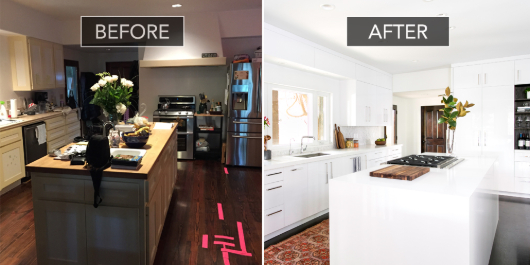| IS A FIXER UPPER THE JOB FOR YOU?
Renovating a fixer-upper is not for the faint of heart. While the price tag might be appealing, the markdown on the house might not make up for basic renovation costs. Make sure you do the math first. “A lot of people have a misconception about what they have to do with a fixer-upper,” Tom Silva, a general contractor starring on PBS’ home improvement show “This Old House,” says. In advice given to do-it-yourselvers, Silva says, "They have to think about the age of the house. They have to think about what you’re planning on doing yourself. Are you going to buy the house and hire out people individually, or are you going to get a contractor to take the job on?” It can be an overwhelming process if you don't know what you're doing. Dan DiClerico, a home expert at home services company HomeAdvisor, says, “When you’re talking about buying a fixer upper, the whole calculus changes because you really need to factor in the cost of the renovation. If the home is move-in ready or close to it, you’ve just got to get to the down payment of closing costs. Figuring out the actual cost of what this renovation is going to cost me, that’s one of the hardest parts of the whole process.” A good rule of thumb? Spend 2% - 5% of your home price on maintenance and repair costs annually.  “Let’s say it’s a $300,000 home,” DiClerico explains. “That first year, the homeowners are going to spend $6,000 to $15,000 just on basic maintenance. So already it’s a pretty big number. If you’re talking about a fixer-upper with pretty major renovation costs, you’re going to have to spend at least 10% of the home’s value, or around $30,000. And that’s before you start talking about the brand new kitchen.” Before you start swinging sledgehammers, be realistic about your expertise. Leave some projects to the pros, and make sure to find out if permits are required. Some systems, like antiquated or faulty wiring, can be dangerous for an inexperienced do-it-yourselfer. Silva warns, “I always tell people if you’re doing the work, it’s going to take longer than you think. The smartest thing that you can do is pick a room that you know you’re going to renovate anyway, like a bathroom. Do whatever has to be done to make that bathroom legal and complete. The key word is complete. Once that room is complete, move on to a kitchen or a bedroom because it’s going to be a long process to do the first room.”
Source: Forbes.com
|
|
|||||||||||||
|
||||||||||||||||||||||||||||||||||||||||||||||||||||||||||||||||||||||||||||||||||||||
|
||||||||||||||||||||||||||||||||||||||||||||||||||||||||||||||||||||||||||||||||||||||
|
|||||||||||||||||||||

 pinterest
If you’ve ever watched “Fixer Upper” on HGTV, you might have gotten the impression that a house that needs a lot of improvements might be the way to go. Buying a home below market value and turning it into a dream dwelling - who wouldn’t want that?
pinterest
If you’ve ever watched “Fixer Upper” on HGTV, you might have gotten the impression that a house that needs a lot of improvements might be the way to go. Buying a home below market value and turning it into a dream dwelling - who wouldn’t want that? 




